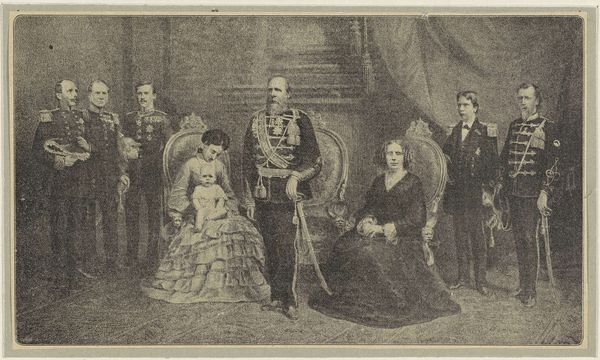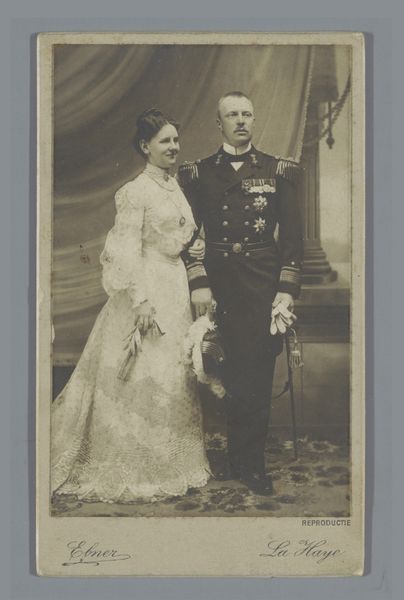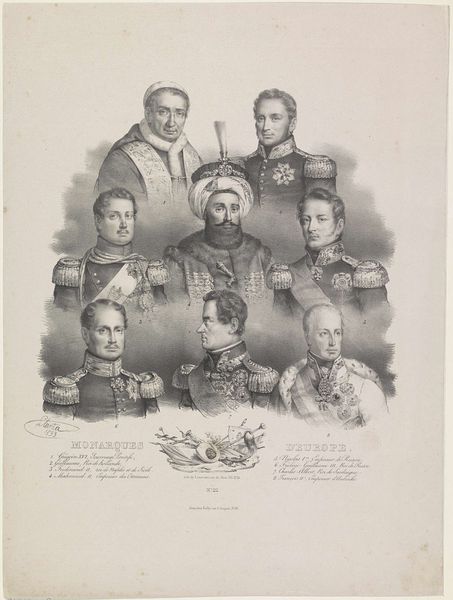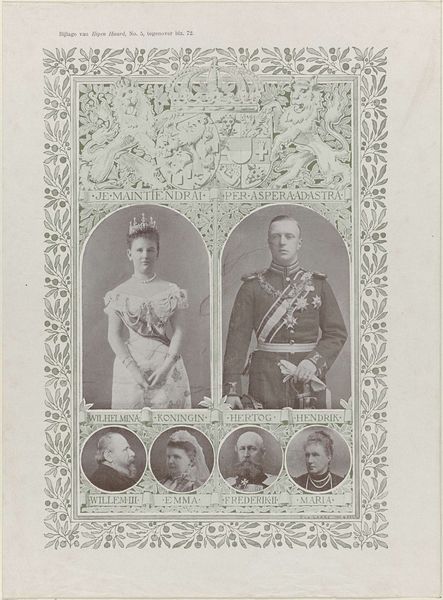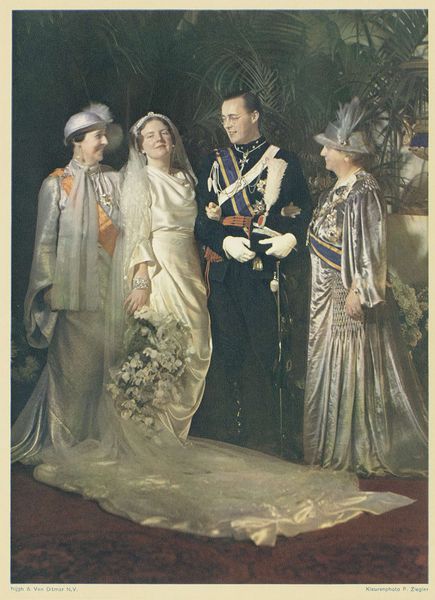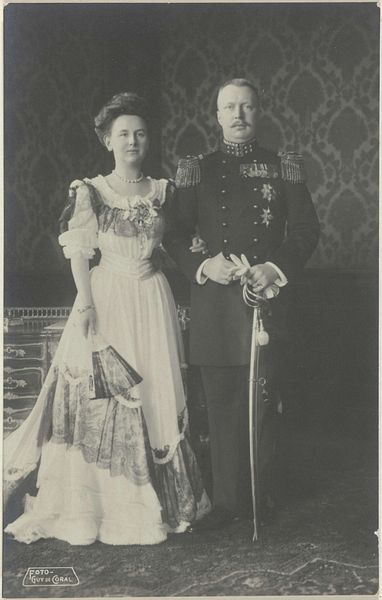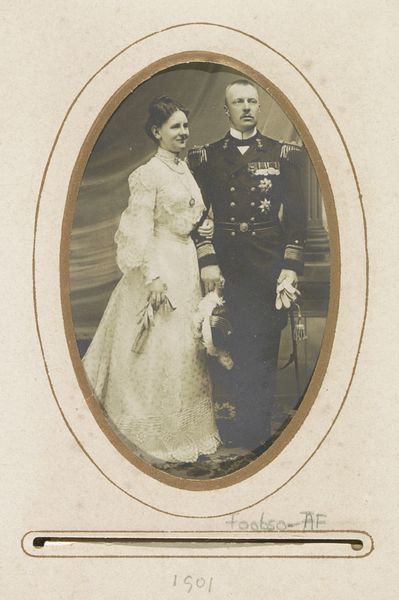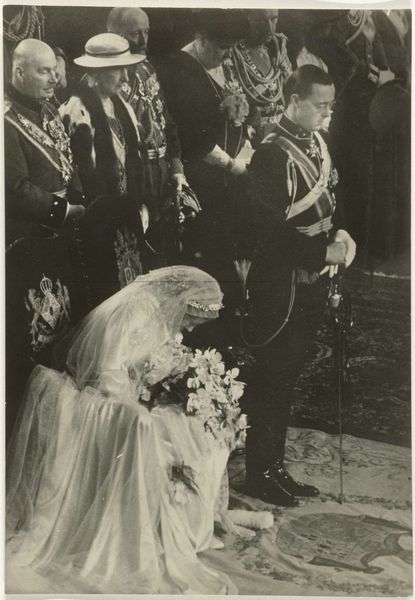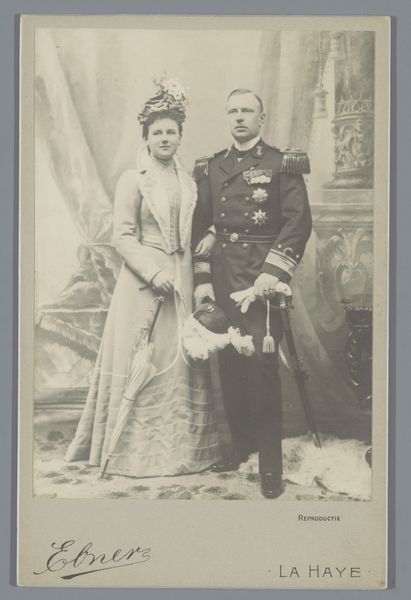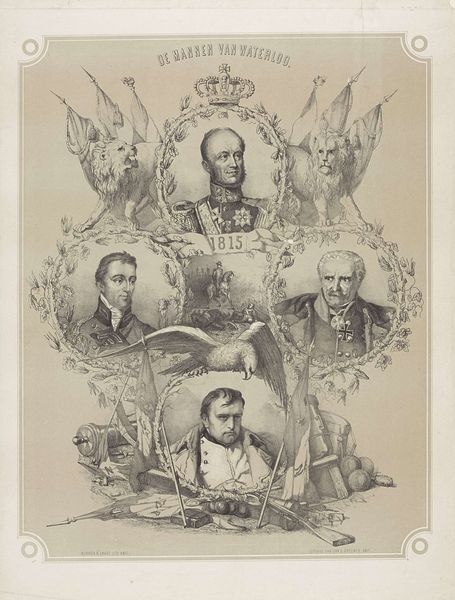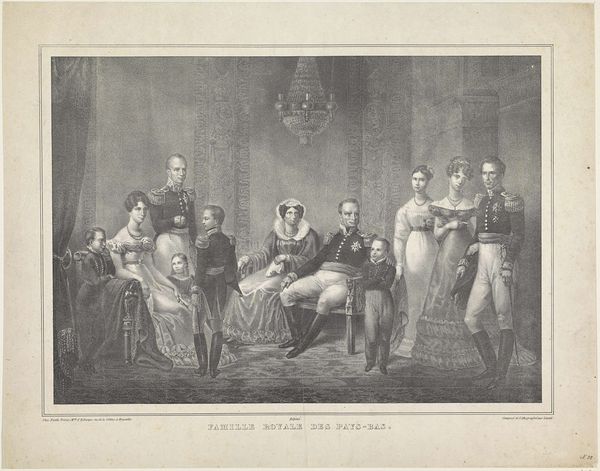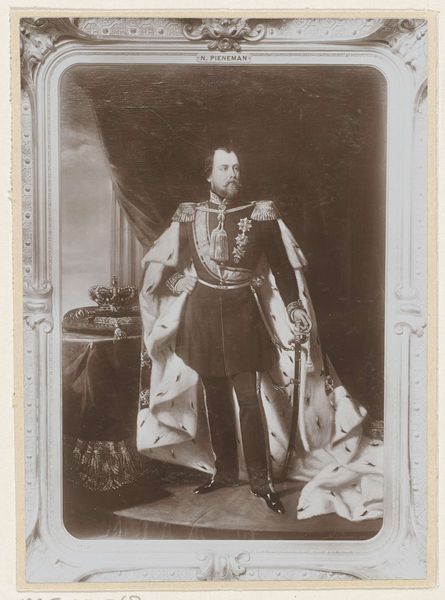
Familieportret van Willem III, koning der Nederlanden, Sophie van Württemberg, zijn broer, zijn oom, zijn nicht met echtgenoot, en twee zoons 1874
0:00
0:00
print, engraving
#
portrait
# print
#
historical fashion
#
group-portraits
#
19th century
#
history-painting
#
academic-art
#
engraving
Dimensions: height 315 mm, width 454 mm
Copyright: Rijks Museum: Open Domain
Editor: Here we have what appears to be a reproduction of a royal family portrait, titled 'Familieportret van Willem III, koning der Nederlanden, Sophie van Württemberg, zijn broer, zijn oom, zijn nicht met echtgenoot, en twee zoons', dating from 1874. It's an engraving, so a print. It strikes me as very formal and somewhat somber. What are some of the stories hidden within this carefully constructed image? Curator: Indeed, these group portraits served as potent symbols. Observe the rigid posture, the carefully chosen attire – each element speaks volumes about power, lineage, and societal expectations. It’s interesting to see the inclusion of extended family; what do you make of that choice? Editor: It emphasizes dynasty, I suppose, continuity. But also, maybe that the nuclear family wasn't enough on its own to project that power. Curator: Precisely! Consider, too, the symbolism inherent in their clothing. The heavy military garb of the men contrasts sharply with the elaborate, yet constricting, dresses of the women. These weren't just clothes; they were statements. Editor: So, the women are almost ornamental? Curator: They embody a particular brand of femininity – demure, supportive, maternal – integral to solidifying the image of the royal house. It’s a performance, a very carefully managed display of self. Do you think that sense of 'performance' changed over time with photography, making painted images seem more authentic in comparison? Editor: That's a great question, and I never thought of it that way. Thanks for your insight! Curator: My pleasure. It is amazing how symbols are powerful even today!
Comments
No comments
Be the first to comment and join the conversation on the ultimate creative platform.
